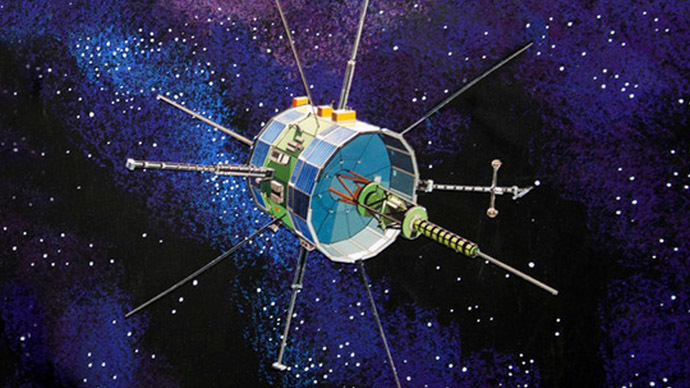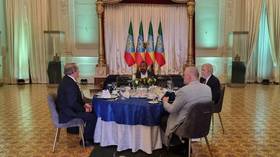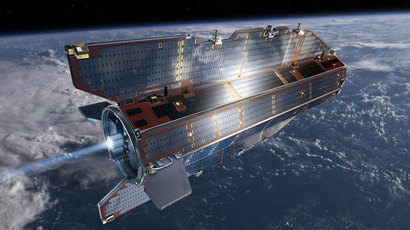Disco-era satellite staying alive with new mission for ‘citizen scientists’

Disco may be dead, but a decommissioned NASA space probe from that era is staying alive, thanks to a group of ‘citizen scientists’ tasked with giving the satellite a reason to survive.
The US space agency signed its first ever Non-Reimbursable Space Act Agreement (NRSAA) with a private firm, giving Skycorp - and its partners Space College and SpaceRef - control over the International Sun-Earth Explorer-3 (ISEE-3) spacecraft that has been unused since NASA deactivated it in 1997.
"We have a chance to engage a new generation of citizen scientists through this creative effort to recapture the ISEE-3 spacecraft as it zips by the Earth this summer," John Grunsfeld, astronaut and associate administrator for the Science Mission Directorate at NASA headquarters in Washington, said in a statement.
The project is a result of crowd-sourced funding, with ‘citizen scientists’ raising nearly $160,000 in just over a month, Gigaom.com reported. The unused probe still has leftover fuel and most of its equipment is still operational. Skycorp will use the money - well more than the initial $125,000 goal - to develop the software, hardware and procedures needed to contact and command the ISEE-3 spacecraft.
The 35-year-old space probe’s “graveyard orbit” will make its closest approach to Earth in 30 years, Reuters reported. The group will have to hustle because the spacecraft must be contacted within a month or so and change its orbit no later than mid-June if it is to have a shot at its new mission: “There is excitement ahead as well: part of the maneuvers will include a flyby of the Moon at an altitude of less than 50 km,” the project website said.
"We're just trying to bring this down to a level where anybody can help us save a spacecraft and anybody can use what comes from it," Keith Cowing, a former NASA employee who maintains the widely-read NASA Watch website, said to CBS News. "Why not? What else are you going to do with it? It also might serve as an inspiration to some folks to say well, if we can do it with that spacecraft are there others out there?"
The ISEE-3 spacecraft was launched in 1978 to study the constant flow of solar wind streaming toward Earth. It finished its prime mission in 1981, then it was redirected - or possibly stolen - to observe two comets. NASA glosses over the background story behind that redirection in its statement. "The intrepid ISEE-3 spacecraft was sent away from its primary mission to study the physics of the solar wind extending its mission of discovery to study two comets," Grunsfeld said. It began a third mission in 1991, studying cosmic rays and solar activity, moving slightly faster than Earth in a similar orbit.
In 1983, former NASA mission design specialist Robert Farquhar famously “stole” the satellite, diverting the ISEE-3 to Halley’s Comet… which NASA said was too expensive, NPR reported. Farquhar came up with a complicated trajectory, moving the ISEE-3 from its position between Earth and the sun, to intercept the Giacobini-Zinner comet in 1985, before any other countries’ space agency reached Halley’s. It also flew through Halley’s Comet in 1986.
"We beat all the other countries of the world," Farquhar recalled to NPR. "The European Space Agency. The Russians. The Japanese."
President Ronald Reagan even sent him a congratulatory letter, but other scientists were not amused.
"They thought that — it was in the newspapers, even — that we stole their spacecraft," Farquhar said. "We didn't steal it; we just borrowed it for a while! That's what I tried to tell them."
Now, the trajectory he gave the satellite is the same one bringing it close to Earth this summer, allowing for the crowd-sourced project (because, like in the comet chase, NASA doesn’t have the money to fund it). "OK, so we took it away in 1983 and you get it back in 2014. How many years is that?" Farquhar asked when talking to NPR. "Oh, that's about 31 years." Farquhar has come out of retirement to work with Skycorp on the project, The Register reported.
Unlike Farquhar’s hijack in the 80s, though, Skycorp and its
cadre of citizen scientists have the space agency’s blessing to
take control of the aging spacecraft, allowing it one last
scientific dance, instead of becoming another disco-era inferno.













